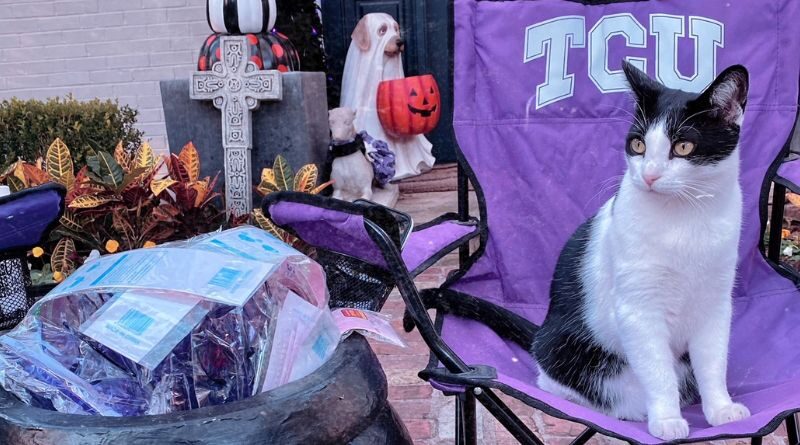Probable Coyote Attacks Reported on Several HP Cats
Lisa Browning’s 6-year-old rescue cat, George, was a favorite on her street. Dubbed “King George of Edmonson” by one neighbor, and “Tux” by another, George loved sitting in front of his house and greeting passing dogs and people.
When George headed inside every couple of hours, he let Browning know he was home with a meow. At night, he would sleep curled up in her legs.
After Browning noticed that George was missing the Friday before Father’s Day, she at first thought the friendly cat might have gotten stuck in a neighbor’s house. He’d gone missing once before, only to reappear in time to greet Browning when she returned from putting up missing cat signs.
Then a neighbor told her that, an hour after George’s disappearance, he’d seen a coyote on their street with “something he should not be carrying” in his mouth. Coyotes were a threat that Browning had been concerned about when she visited her home in more-rural Mineola, but not in Highland Park.
“I know I was just living off a false sense of security,” she said, “maybe being naïve, maybe being complacent.”
Browning learned that another cat on her street was also missing, and that a coyote had been caught on Ring Video snatching a third.
These are the first coyote-pet encounters reported in Highland Park in several years, DPS Public Information Officer Lance Koppa said. In response, the town has increased patrols between 4 a.m. and 6 a.m. in the area where the cats were taken.
The town has also emailed residents with information about urban wildlife and coyotes. The message included a link to an online form that residents can use to report sightings. Alternatively, residents can call Highland Park police dispatch at 214-521-5000 if they see a coyote. Officers will document the sightings and respond if needed, Koppa said.
Highland Park will look for patterns of behavior in the data it receives. It will share the information with an expert at Texas Wildlife Services who the town has already made aware of the coyote-pet encounters, Koppa said.
Urban coyote issues are on the rise across Texas, said Ken Gruver, state director for the Texas Wildlife Services Program.
“It’s common, if you have urban coyotes, that you can lose cats like that,” he said. Coyotes have the ability to learn, he added. They may return to an area where they know easy prey, such as small pets, is readily available.
Residents should keep their small animals, as well as any dog and cat food, out of reach of coyotes, especially at night, he said. People should not try to feed coyotes, and should be especially cautious of those that have lost their fear of people.
“You definitely want to keep coyotes wild,” he said. “You don’t want to give them a reason to be around and associate with people. It’s a good idea to try to scare them off and yell at them.”
“Make it uncomfortable,” Koppa advised residents who see a coyote. He said that officers have scared the animals away by yelling, clapping their hands, and shining spotlights on them.
Browning hopes that George’s memory helps prevent future attacks on pets. “He just would go get love from everybody and give love back,” she said, “but never didn’t come home.”









